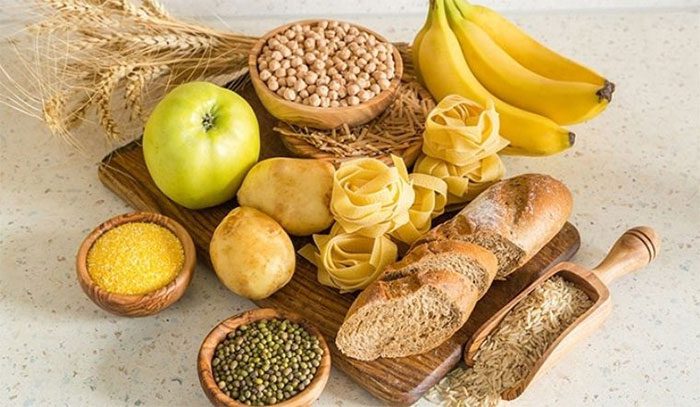In recent years, we have often heard about the concept of a type of starch known as “resistant starch.” Research has demonstrated that this type of starch has numerous health benefits. So, what is resistant starch, and how does it affect human health?
Benefits of Resistant Starch
1. What You Need to Know About Resistant Starch
While most starches we consume are quickly digested in the small intestine, a small portion remains that passes through to the large intestine. Resistant starch is a form of starch that cannot be digested in the small intestine. It travels through the small intestine intact and is then fermented in the large intestine, producing short-chain fatty acids that serve as an energy source for colonic cells.
In other words, resistant starch is a type of carbohydrate that is not digested in the small intestine. Instead, it is fermented in the large intestine, nourishing beneficial gut bacteria.
Carbohydrates are nutrients that provide energy to the body in the form of glucose (a sugar molecule). Carbohydrates can be simple or complex. Simple carbohydrates have a straightforward chemical structure. The body does not require much energy to break them down into glucose. Simple carbohydrates are often found in unhealthy foods such as candies, white bread, and white rice.
Resistant starch is a type of complex carbohydrate. Complex carbohydrates have a more complicated chemical structure that the body requires more energy to digest. They are generally healthier and more nutritious.
Resistant starch is believed to benefit health by helping to prevent the growth of abnormal cells in the gut. In the large intestine, resistant starch fuels resident bacteria, which break it down (ferment) into products that help support a healthy digestive system and protect against various diseases.
According to Associate Professor Dr. Vu Duc Dinh, a former lecturer in Gastroenterology at the Military Medical Academy, resistant starch consists of substances with a structure similar to starch but cannot be digested in the small intestine by pancreatic enzymes. Instead, it travels to the large intestine and is fermented thanks to the bacterial system there, providing beneficial bacteria for the gut. Resistant starch has numerous health benefits and contains fewer calories than regular starch. Therefore, it is not only good for gut health but also serves as food that helps reduce and maintain an appropriate weight.

Foods Rich in Resistant Starch.
2. Health Benefits of Resistant Starch for Humans
Studies show that resistant starch offers many health benefits, particularly in supporting a healthy gut microbiome, improving insulin sensitivity, increasing feelings of fullness, and reducing appetite. Therefore, it is beneficial for digestive health, individuals with diabetes, and those who are overweight or obese and seeking to lose weight.
2.1. Enhances Gut Health
Resistant starch is crucial for supporting a healthy gut microbiome. When resistant starch escapes from the small intestine, it provides a food source for “good bacteria” in the large intestine, promoting their growth and activity, leading to favorable changes in the large intestine.
The fermentation process of resistant starch facilitates the production of butyrate, a key metabolite of bacteria essential for maintaining a healthy and functioning gut. Butyrate is the preferred fuel for the cells lining the gut and ensures the integrity of the gut wall, helping to protect it from cancer and other digestive diseases.
2.2. Helps Stabilize Blood Sugar Levels
When we consume certain types of regular starch, enzymes break down those bonds into glucose, affecting our blood sugar levels. Some types of starch, such as those found in refined grains with a high glycemic index, are easily broken down, leading to rapid glucose absorption and potential spikes in blood sugar levels.
In contrast, resistant starch is not digested in the small intestine, so glucose from food is not released rapidly into the bloodstream, preventing spikes in blood sugar levels. Resistant starch helps reduce the risk of developing type 2 diabetes by increasing the body’s sensitivity to insulin.
2.3. Aids in Weight Loss
Because resistant starch is more difficult to digest, the body requires more energy to break it down. You will not feel hungry quickly, so you will eat less, which can be beneficial if you are trying to lose weight.
3. Foods Containing Resistant Starch
All types of starchy foods contain resistant starch. It occurs naturally in grains, legumes, nuts, and some starchy vegetables…
The amount of resistant starch varies greatly depending on how the food is produced and processed, such as cooling or reheating…
Essentially, resistant starch can be categorized into five types, commonly found in the following food forms:
- Type 1 Resistant Starch: This type of resistant starch is found in partially milled grains and some starchy foods. This starch is trapped within the fibrous cell walls of the grains, making it indigestible unless it is ground or milled.
- Type 2 Resistant Starch: Found in starchy foods such as unripe bananas, raw potatoes, lentils, etc. Type 2 resistant starch is difficult to digest because it is in a compact form, making it challenging for digestive enzymes to break it down.
- Type 3 Resistant Starch: Found in foods that have been cooked and then cooled, such as certain starchy foods like rice and potatoes that are cooked and cooled before consumption, a cooling process converts some starches into resistant starch.
- Type 4 Resistant Starch: This type of starch is chemically modified, commonly found in bread and pastries.
- Type 5 Resistant Starch: A type of starch produced through traditional methods by heating and cooling certain starches with specific fats, changing their structure and making them resistant to digestion like fats or waxes…
Why Do Most Birds’ Nests Face Upward?
A Ghost Ship Reappears in a Coal Mine After 1,700 Years of Disappearance
Why Can the Tallest Building in the World Withstand Winds of 240 km/h?


















































